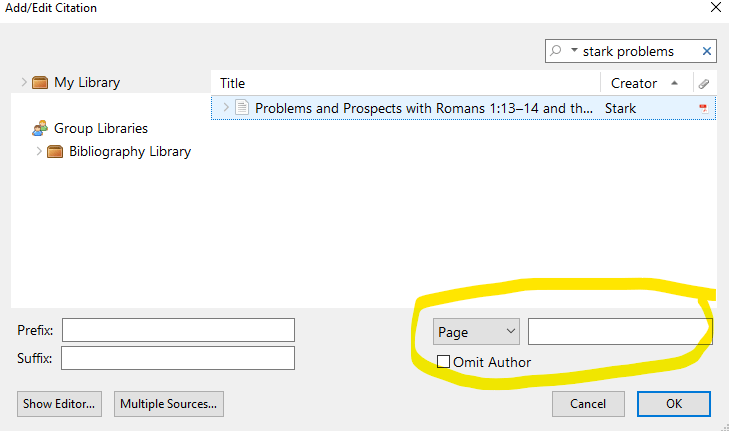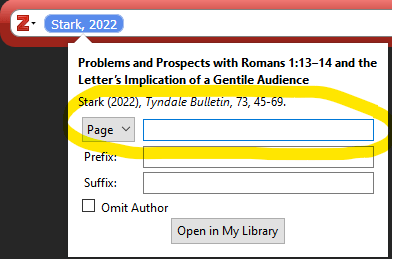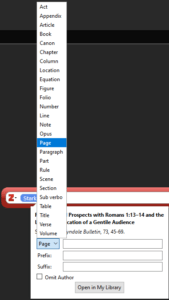Zotero makes it easy to collect and manage bibliographic data in one central location.1 The word processor plugins for Word, Writer, and Google Docs then make that data conveniently available as you’re working on your documents.2
But you often need to cite not not just a particular source but a particular place in that source. With Zotero, you supply this information when you add the source in the citation dialog.
How to Cite Page References

If you use the “classic” citation dialog, you’ll have a page number field immediately available to you once you select a reference.
But if you use the default citation dialog, you’ll specify a specific page or page range for your citation in one of two different ways.
1. Enter the page(s) in the citation dialog.
You can enter the page(s) you want to cite directly in the search box. Beside your search terms, just enter “p” (or “p.” or “pp.” or “:”) and then the page(s).3 When you press enter, Zotero will interpret what follows “p” as the page(s) you want to cite.
You can actually leave out the “p” most of the time, and Zotero will interpret the page reference properly. But when a page number is 1000 or above, Zotero tries to interpret it as a year of publication rather than as a page reference. So, at least in those cases, you’d need to add “p” to explicitly tell Zotero that what follows is a page reference.
2. Enter the page(s) in the popup menu.

Alternatively, you can enter page references in the popup menu inside the citation dialog.

Once you select a source, you can click on that source (or do Ctrl+↓) to open the citation dialog’s popup menu. That menu will then have a field where you can enter a page reference, similarly to the classic citation dialog.
How to Cite Other Locator Types

Of course, sometimes, you’ll need to cite a source by something other than page numbers. For that, you’ll need either the classic citation dialog or the default citation dialog’s popup menu.
In both places, you’ll find the default “Page” locator type is actually a drop-down menu. When you click that menu, you’ll see the various types of locators that Zotero supports.
Some common ones you might use in SBL style would be
- Folio, for citing locations in original manuscripts;
- Section, for citing locations in grammars; and
- Sub verbo, for citing locations in dictionaries.
Just select the type of locator that’s appropriate to the source you’re citing, and Zotero should be able to indicate that locator type properly in your citation.
Conclusion
Zotero makes it quite easy to include references to particular pages or other locators in your citations. You can include the locators later by hand. But when you enter them via the citation dialog, the Zotero will be able to ensure that these locators are managed properly in the context of everything else you have in a given citation and any future updates you might make to it.

Leave a Reply